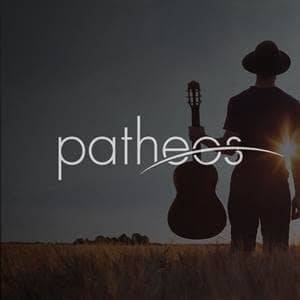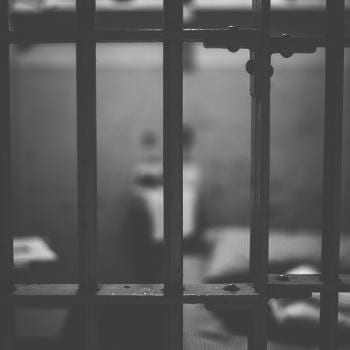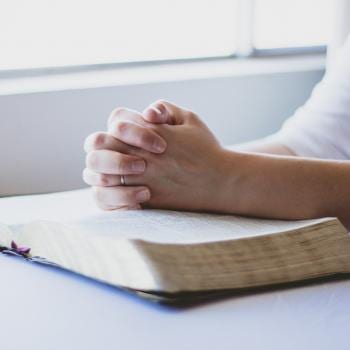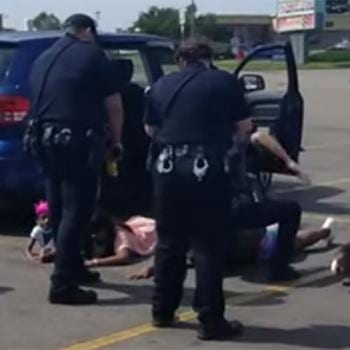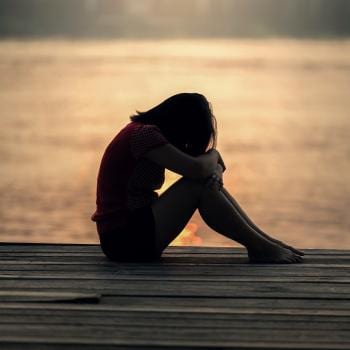While we often talk about police responsibility in cases of police brutality, we rarely talk about the responsibility of those who make the calls that result in acts of police brutality. For example, police who shot and killed John Crawford III while he was shopping in Walmart with his girlfriend were responding to a 911 call that claimed Crawford was threatening people with a gun, claims store surveillance tapes revealed to be false. While police were still in the wrong—they shot Crawford on the spot, without giving him time to drop the BB gun he was carrying over his shoulder—they were also acting on bad information.
White people in the United States tend have an implicit racial bias whether they are aware of it or not. As a result of this bias, white Americans are more likely to perceive of black individuals, and black men in particular, as dangerous or criminal. And you don’t have to take my word for it, there is plenty of research to back this up. For example, researchers at the University of Chicago showed participants a series of images and asked them to hit a “shoot” key if the image showed a person holding a gun. The results were damning:
In experiment after experiment—Correll has tested undergraduates, DMV customers, mall food-court patrons, and police officers—people’s mistakes, although rare, follow a pattern: they shoot more unarmed blacks than unarmed whites, and they fail to shoot more whites than blacks who turn out to be holding weapons. Recounting the results of four separate studies in a 2002 Journal of Personality and Social Psychology article, Correll and fellow researchers wrote, “In the case of African American targets, participants simply set a lower threshold for the decision to shoot.” That trend held true even when the participants themselves were African American.
. . .
A study in the June 2006 Journal of Experimental Social Psychology offers proof of how deeply lodged those stereotypes are. In that test, Correll hooked electrodes to participants’ scalps to monitor the electrical activity of neurons firing as the video game played out. “Surprise, surprise,” he says, “the P200s”—a neuronal voltage jump associated with threat responses—“tended to be bigger for black faces than for white faces.” Especially strong P200s translated to more pronounced bias in the video game. “This fluctuation is happening just 200 milliseconds after the stimulus appears on the screen,” Correll says. “We’re talking very, very quick—preconscious. This is your first gut response.”
It is not surprising, then, that race would play a role in when people choose to call 911 and in what individuals report when calling 911. We saw this play out again over the weekend when officials released the 911 call that resulted in the aggressive detention of Jason Goolsby, a black D.C. college student, last week. Here is the 911 call:
911 operator: “DC 911 What is your emergency?”
Caller: “Hi yes umm I want to report that there are 3 umm teenagers in the Citibank on Pennsylvania Avenue and Seventh…that are waiting at the door to let people in, but aren’t doing anything inside of the bank. Uh we just left but we felt like if we had taken money out we might’ve gotten robbed. Umm so…”
911 operator: “For verification, repeat that location for me.”
Caller: “It’s uh, Pennsylvania Avenue and Seventh Street…I’m sorry Sixth Street. Pennsylvania and 6th; Citibank on Pennsylvania and 6th South. (inaudible)”
911 operator: “You said it’s three of them?”
Caller: “There is three, yeah three adolescences hanging out inside of the ATM section of the bank.”
911 operator: “Okay, we’ll have the police respond out. Were you able to get a description of any of them?”
Caller: “Uhh, three umm African American boys with uhh like flat-top haircuts. One was about 5’7”; one was about 5’11.” One had metal work in his teeth, umm all three had backpacks.”
911 operator: “And did you want to leave your name and number?”
Caller: “Sure, it’s ***********.”
911 operator: “Your phone number?”
Caller: “***-***-****”
911 operator: “Ok, we’ll have the police to respond out to check them out.”
Caller: “Ok, thank you. And I have to reiterate the only issue that really made it standout was that they were just…they weren’t doing anything in the bank and as soon as we left they stayed. So, umm that was suspicious.”
911 operator: “No problem, we’re just going to check them out.”
Caller: “Alright, thank you.”
911 operator: “You’re welcome.”
Caller: “Bye bye.”
The caller reports three black teenagers standing by a bank’s ATM and tells the 911 intake officer that “we just left but we felt like if we had taken money out we might’ve gotten robbed.” In other words, she called 911 because shelf felt threatened by three black teenagers whose only crime was standing by a bank.
Now it is possible that she would have called 911 had the three teenagers been white, but when we consider what we know about white American’s implicit racial bias, I find that unlikely. If the teens had been white, the caller would likely have assumed that they were there to use the ATM themselves—which in fact they were.
Goolsby said they were going to use the ATM, but decided against it, held a door open for someone with a baby stroller and then started to walk away when police responded.
What happened then?
Police responded to the area and Goolsby said a squad car nearly hit him. Because of that, Goolsby said as an instinct, he ran.
When Goolsby ran, officers pursued him, tackled him, handcuffed him, and detained him. You can see the video here.
With all the focus on police brutality, it’s easy to overlook the role played by 911 callers. In 2013, Jonathan Ferrell, a black man, was shot dead by police responding to a 911 call. Ferrell had crashed his car, lost his cell phone, and been injured. He’d clawed his way out of the wreck and gone to the nearest house to ask for help. The house’s white occupant called 911 and reported that a black man was trying to break into her house. The ensuing trial focused on the fact that the police officer who shot Ferrell violated protocol by using excessive force, but I think we would be remiss if we did not consider the role the 911 caller had in priming the police to believe that they were dealing with a violent burglar.
As we continue the longer conversation about race and police brutality, let’s make sure we talk about the role race plays in 911 callers’ decisions and in what they report, and also the role these 911 calls have in framing the situation for police officers who respond to the scene. And while we’re at it, let’s do what we can to recognize and correct our own implicit racial biases.



